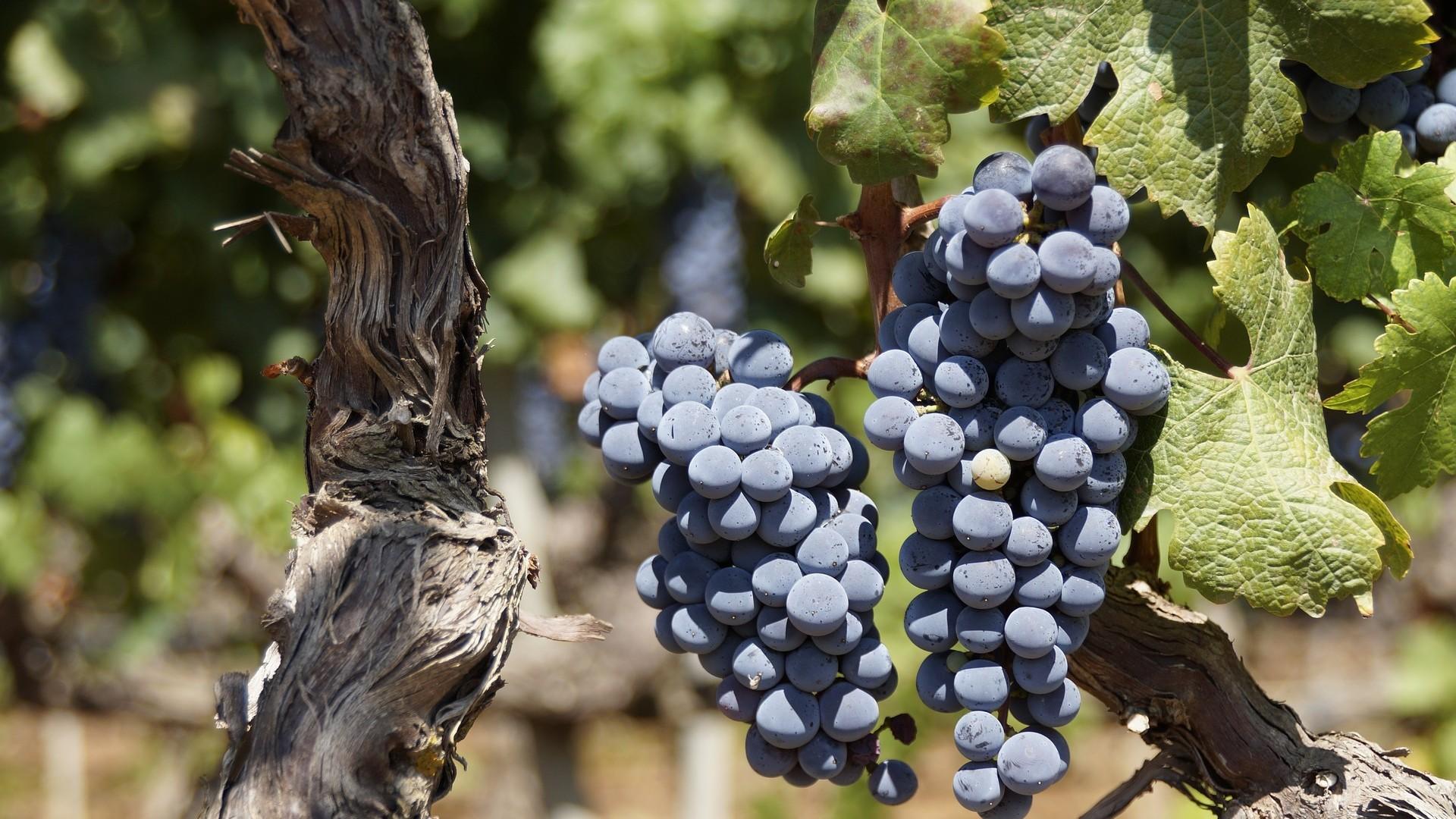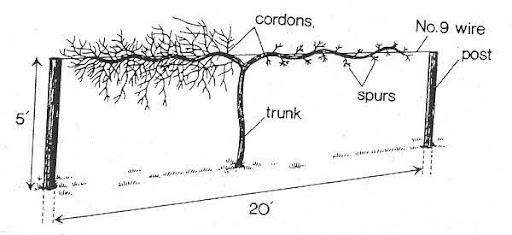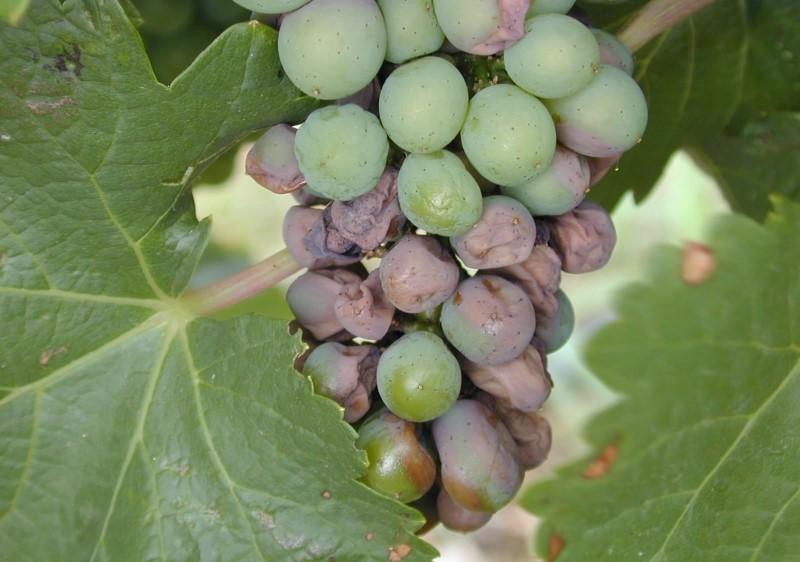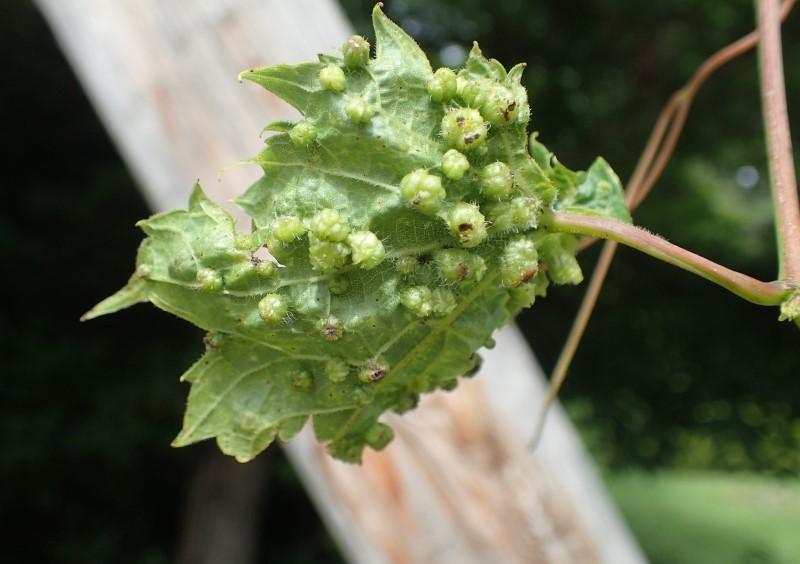About grapes
- Grapes are long-lived woody perennial vines with a very deep root system. Established grapevines are difficult to dig up and move.
- Fruits form on second-year wood, although older latent buds (dormant until stimulated into growth) sometimes flower and fruit on older wood.
- New shoots emerge from arms (short branches connected to the trunk) in spring. Shoots don’t end with terminal buds; instead, they grow all season. First-year growth is called a shoot; the second-year growth is called a cane.
- Compound buds with 4 growing points form during the summer. If a late spring freeze kills the primary growing point, other growing points will take its place but will produce a smaller crop.
- Lateral (side) shoots grow from overwintered buds and produce leaves and 1-2 flower clusters (panicles) each.
- Botanically, the fruits is a true berry. Grapes are self-fruitful– pollen from one plant of one cultivar is effective for fertilization and fruit growth. Bee activity is required for the best fruit production.
- Black rot is a widespread, significant fungal disease that often reduces yields.
Cultivated grape species
Fox grape (Vitis labrusca) - Locally native and wild in much of the eastern U.S. The source of all seeded and seedless table grape cultivars (used for fresh eating). Most gardeners prefer seedless grapes. American table grapes are naturally resistant to Phylloxera, an aphid-like insect that, in large numbers, severely damages and kills the roots of susceptible grapevines.
Muscadine grape (Vitis rotundifolia) - Not reliably winter-hardy in Maryland, although that may change as winters become warmer due to climate change. Native to the southeastern U.S.
European wine grape (Vitis vinifera) - They can be grown successfully by gardeners, but require more specialized knowledge of site requirements, pruning, and pest management.
- Recommended Wine Grape Cultivars for Regions of Maryland by the Maryland Grape Growers Association
- V. vinifera cultivars are generally less cold-hardy and more susceptible to black rot and other diseases than V. labrusca cultivars.
- Wine grapes must be very ripe to make good wines.
- Canopy management and good exposure of clusters to light are more critical for wine grapes.
| Recommended Table Grape Cultivars | |
|---|---|
| Cultivar | Comments |
| Canadice | Seedless. Early, small-medium red grape with superb flavor. Keeps on the vine. Reliable and productive. |
| Himrod | Seedless. Golden yellow fruit with a fine flavor that keeps well. Very cold-hardy; moderate disease resistance. |
| Jupiter | Seedless. Large, crisp blue fruit. Non-slipskin. Excellent flavor. |
| Mars | Seedless. Very hardy, productive, and dependable. Large blue fruit. |
| Neptune | Seedless. Very large, yellow-green fruit; some disease resistance. |
| Reliance | Seedless. Dependable variety. Very hardy vines. Large, high-quality red fruit will store for 3 months. |
| Steuben | Seeded. Very large, blue, spicy fruit. Hardy, with some disease resistance. |
| Sunbelt | Seeded. Similar to, but more heat-tolerant than Concord. |
| Vanessa | Seedless. Brick-red, medium-sized grapes. Firm texture and fruity flavor. |
Notes: American bunch grapes (V. labrusca) have slipskins that separate easily from the flesh (undesirable for table grapes). Mars and Sunbelt have V. labrusca parentage only. The other cultivars are hybrids of V. labrusca and V. vinifera.





